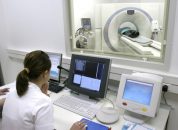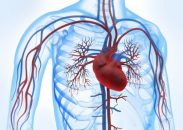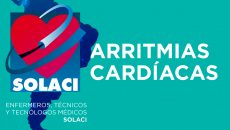✔️ Watch again the session on Cardiovascular Disease Management and Cath Lab During the COVID-19 Pandemic in the SOLACI-CACI 2021 Congress. 👨🏫 Program: 04:55 – Thromboembolic Complications in COVID – José Ceresetto 27:59 – Global Registry of Acute Myocardial Infarction of Primary PCI in COVID Era – Giuseppe De Luca 53:36 – Infectious Disease Care in…
A Headache for Cardiologists: Ischemia with Non-Obstructive Disease
Treating patients with functional stress test induced ischemia and non-obstructive coronary artery disease (INOCA) is complex and often frustrating. The multifactorial nature of this disease in addition to the complex physiopathological relationship between angina and ischemia turn these patients into a real headache for cardiologists. The CIAO-ISCHEMIA was recently published in Circulation and was designed…
Watch again our Webinar on Update on the Treatment of Acute Coronary Syndromes without ST Segment Elevation
Watch again our Webinar on “Update on the Treatment of Acute Coronary Syndromes without ST Segment Elevation” on our Youtube account. The event was held on May 18th, 2021.
CT and Angiography Agreement in Patients from the ISCHEMIA Trial
Computed tomographic (CT) angiography showed a high degree of agreement with conventional angiography to detect significant coronary artery disease and rule out left main disease. This imaging study was done on a group of patients before their randomization in the ISCHEMIA trial. Data are soon to be published in JACC Cardiovascular Imaging and add plenty…
Revascularization Is Needed Before TAVR
Disease prevalence in patients with severe aortic stenosis is highly variable: from 80% in inoperable patients to only 15% according to the most recent research including low-risk patients. Given the high mortality observed in patients with heart disease, guidelines suggest considering coronary bypass revascularization in those in need of a valve replacement. This experience with…
ISCHEMIA: New Analysis Might Change Study Outcome Interpretation
A new ISCHEMIA analysis has shown its outcomes are highly dependent on MI definition. The original conclusion had shown a significant difference between invasive and conservative strategies using the most sensible definition of MI: troponin elevation. When looking at events using MI definition as troponin elevation, we will see the conservative treatment reduces primary end…
Global FFR as Prognosis in CAD Patients without Ischemia
Global fractional flow reserve (FFR) results from adding up FFR values of the three major coronary arteries. This figure represents the physiological atherosclerosis burden and can predict events at long term in patients without stenosis leading to ischemia. This recent study published in JAHA looked at major cardiovascular events (death, infarction and revascularization) at 5…
AHA 2020 | Effect of Evolocumab in Complex Coronary Revascularization
Evolocumab, a PCSK9 inhibitor, has shown significant reduction of complex coronary disease requiring revascularization (be it PCI or CABG). Proprotein convertase subtilisin/kexin type 9 (PCSK9) inhibitors induce plaque regression and could eventually reduce the risk of coronary revascularization, especially complex revascularization. The FOURIER study randomized 27564 patients with stable CAD already on statins to evolocumab…
Mental Stress, Frontal Lobe Activation and Chest Pain
Historically, we have believed that mental stress might induce chest pain as a response to increased levels of catecholamines and consequently increased product (by 100%), just as it happens with physical stress. This innovative study published in Circ Cardiovasc Imaging shows the activation of specific areas in the brain is independently associated with chest pain…
SOLACI Webinar | Cardiac Arrhythmias
We are interested in your opinion. Please, leave your comments, thoughts, questions, etc., below. They will be most welcome.









